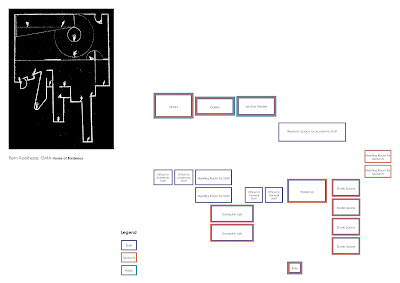Tuesday, 25 June 2013
Monday, 24 June 2013
Link to CryEngine3 Environment
https://dl.dropboxusercontent.com/u/42756057/Arch1101_Exp3/Arch1101_Landscape_Final.cry
The Architectural Spaces
Exterior of the Spaces
This is the main part of the architectural school which includes nearly all of the spaces that were required for the architectural school. It has been altered and made convenient as the spaces will change over time depending on how it is used.
This is the other part of the architectural school that consists of the Gallery and the Lecture theatre, this completes the criteria required for the architectural school. It is designed to be altered as required as mentioned in my theory. (Refer to MashUp)
Interior of the Spaces
Studio
Research Space for Academic Staff
Computer Lab
Library
Gallery
Lecture Theatre
Progress on the Spaces
Scottish Parliament by Enric Miralles
Cemetery by Aldo Rossi
The architectural school was inspired by these two great pieces of architecture attached above. Most of the elements of the architectural school were based on how I altered and interpreted the traditional boat structure that are the basis of the Scottish Parliament by Enric Miralles to suit my criteria of the architectural school. The other part of the architectural school is based on the opposite side of the valley and is inspired by Aldo Rossi's Cemetery, the structure contains the Gallery on the higher floor and the Lecture Theatre under it. These original plans of these two buildings were turned into sections and then altered to create the final models.
Work in Progress
I started my architectural school with the Plan that I had turned into a section as I designed it to fit the criteria of the architectural school. I used the actual section to get the organic shapes of the boats I had created by hand.
I decided to start changing the orientation of the "boat" shaped structures to suit the environment and so that they can fit in like a puzzle. This works as a part of my architectural theory (Refer to MashUp), which believes in the alteration of space with convenience.
This part of the architectural school is based off Aldo Rossi's Cemetery which have alters made to suit it to be a Gallery and a Lecture theatre.
Sunday, 23 June 2013
Monday, 10 June 2013
Thursday, 6 June 2013
Precedent: Enric Miralles- The Scottish Parliament
I decided to look back at the Scottish Parliament by Spanish architect Enric Miralles as it relates to the idea of using abstract boats as a part of the architecture. As I have explained previously, it is the mean transportation used in the chosen valley. Hence I am looking back at my research from last year to process in my plan for experiment 3.
Tuesday, 4 June 2013
Precedent: Boats- Mean of transportation
Some of the greatest rivers of the world flow through Bangladesh, and these rivers form what is perhaps the world's most complete system of inland water navigation. Boat operations on inland water play a more prominent role in Bangladesh than anywhere else in the world. The way of life for the 120 million people who live in Bangladesh is, to a large extent governed by inland water, and for several months every year approximately one third to half of the land is submerged under water. Millions of people take boats and life becomes a floating world. It is estimated that there are more than 700,000 boats in the country, employing several million people. In the past the fabric of the boats depended on the craft of the carpenter, blacksmith and village weaver. The "country boats" were truly and genuinely "made in Bangladesh." Since the mid 1980s however, a technological revolution has taken place in the country boat sector. Several hundred-thousand country boats have been fitted with small engines. Beautiful sailing boats and life around them will soon be remnants of the past. The atmosphere of the diverse unspoiled sailing on the inland water routes of Bangladesh aims to preserve the rich cultural heritage that the traditional country boats represent in Bangladesh.
Reference:
1. Eirik G. Jansen and Trygve Bølstad, Sailing Against the Wind: Boats and Boatmen of Bangladesh, pg 4.
Monday, 3 June 2013
Sunday, 2 June 2013
Subscribe to:
Posts (Atom)

.jpg)






































